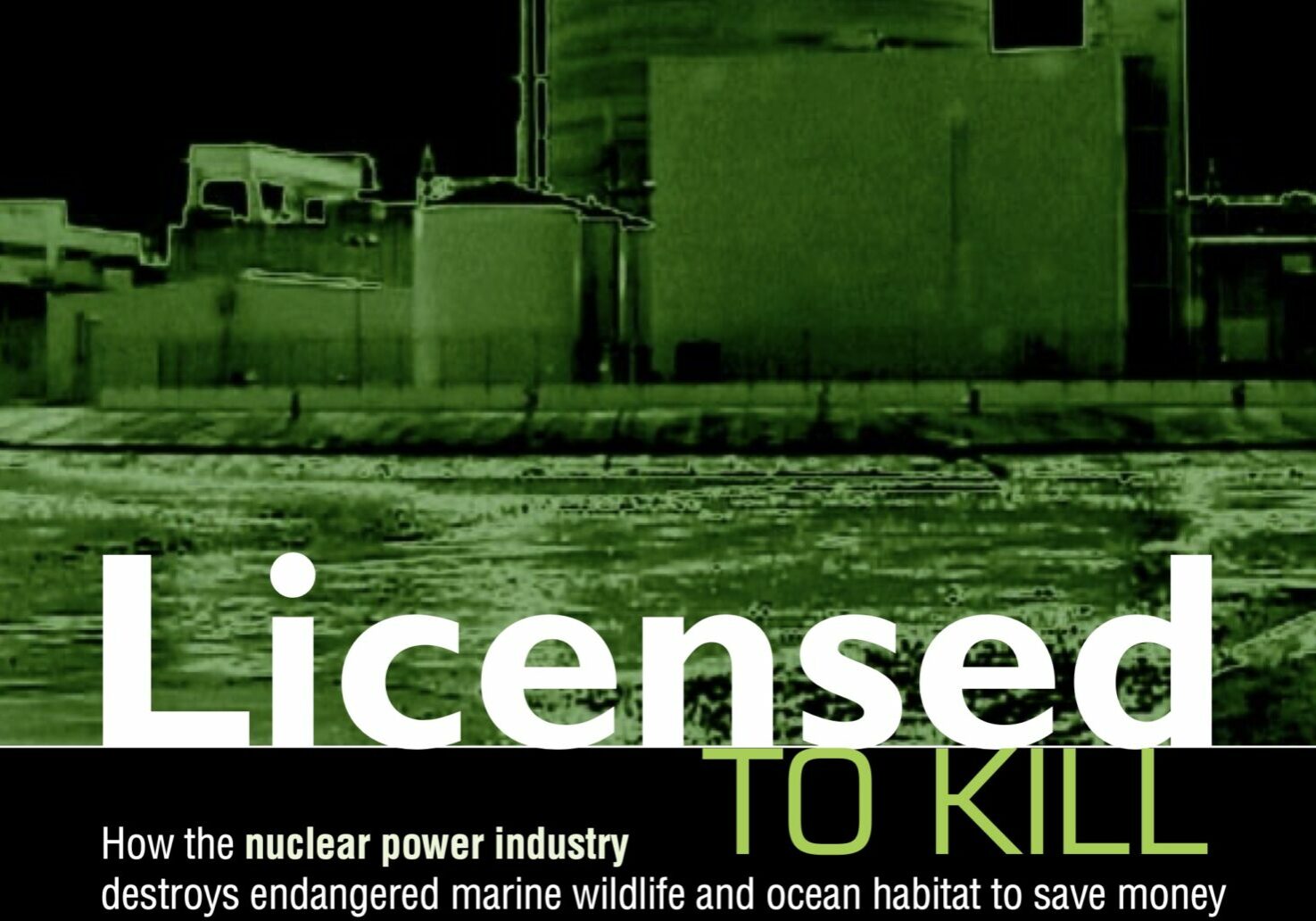‘Significant harm’

Nuclear power can’t avoid harm to environment despite inclusion under ‘Taxonomy’
The European Parliament has chosen to include nuclear power and gas under the European Commission’s Taxonomy Delegated Act. This effectively — and absurdly — classifies nuclear power and gas as environmentally sustainable economic activities.
Inclusion in the Taxonomy theoretically allows nuclear and gas access to private sustainable finance. Gas and nuclear will be treated as transitional fuels only, and to do so, they need to comply with certain conditions.
The terms by which nuclear power is eligible is if new plants that are granted construction permits by 2045 avoid significant harm to the environment and water resources.
But who decides what “significant” harm really means? In our 2001 landmark report, Licensed to Kill, we found considerable and routine harm caused to aquatic animals and environments from nuclear power plant operations. Marine habitats are significantly damaged and destroyed by nuclear power plants using the “once-through cooling system.” A variety of animal species are routinely drowned, thermally shocked, pulverized, injured and trapped by reactors that can draw in and discharge as much as three billion gallons of water a day to cool the plant.
That high water consumption also speaks to the issue of ever scarcer water resources. We have already seen nuclear reactors power down or close due to low water supplies under drought conditions. This will only worsen under the climate crisis. This means that nuclear power plants do not now meet the conditions required under the Act, and new designs — if they ever arrive — are unlikely to perform any better. We are already facing an unimaginably high death toll for fish species — at least half a million a day — at the still uncompleted Hinkley C reactors on the Somerset coast in the UK, an indicator that “advanced” reactors have not mitigated their environmental damage at all.
Licensed to Kill, sadly not out of date, also revealed how weakly regulated that “significant harm to the environment” actually is. That means that nuclear power will likely once again do an end run around any environmental scrutiny in order to grab funding under an Act that could divert funding from renewables— far less damaging and costly in every sense.
Support Beyond Nuclear
Help to ensure a safer, greener and more just world for all

